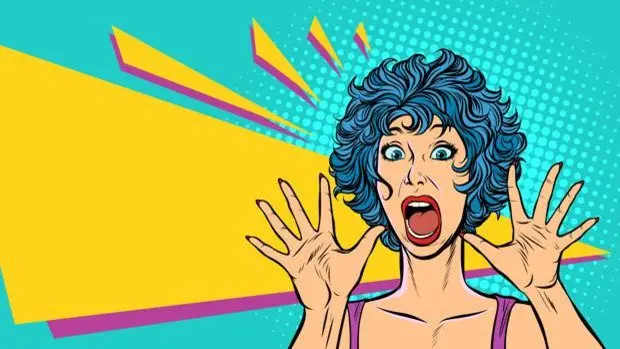Contents
Relaxation techniques to calm yourself when you panic
Psychology
The onset of a panic attack occurs unexpectedly, unlike other anxiety disorders, and reaches its maximum expression quickly, suddenly, in about ten minutes

Stress has been the silent enemy in recent years. Not only as a consequence of the Covid-19 pandemic, which has altered our daily life, but also the accelerated pace of our society makes it part of our day to day.
The social isolation that we have had due to confinement, anguish and concern about the uncertainty of our lives, among other problems, can generate situations of great negative impact on our health, such as anxiety or depression, although many times it also leads to real panic attacks.
What is a panic attack? According to the experts Ane Birumbrales and Beatriz Mora, both psychologists at the López Ibor Clinic, it is a “very intense experience of fear and discomfort” that occurs before the sensation of danger and / or imminent death. The onset occurs unexpectedly, unlike other anxiety disorders, and reaches its maximum expression quickly, suddenly (approximately 10 minutes).
symptom
«Symptoms that can accompany intense fear are the following: palpitations, heart jerks or increased heart rate, sweating, tremors or shaking, feeling of suffocation or shortness of breath, feeling of choking, chest tightness or discomfort, nausea or abdominal discomfort, instability, dizziness or fainting, derealization or depersonalization, fear of dying, losing control or going crazy, paresthesias, chills or suffocation ”, they list, and it is enough that some of these symptoms appear in any situation for the following to be triggered, since they are linked to interpretations that at the base is fear.
«The person may feel a chest pressure, and that is when the idea that he can drown appears, so he connects with his breathing (something that is natural becomes conscious), therefore he begins to breathe deeply, ending in hyperventilation », say the psychologists. Let us bear in mind that in the breath you breathe in oxygen and breathe out carbon dioxide, so excessive breathing leads to a reduction in carbon dioxide levels in the blood, which causes symptoms such as dizziness, and hence nausea or abdominal discomfort “, they say.
This crisis can be triggered by a stressful and unidentified situation in a person’s life and after solving it, it may not manifest itself again. On the contrary, its maintenance is associated with fear of it happening again, establishing the picture known as fear of fear.
«In recent decades, Relaxation They have been used for the treatment of a great variability of psychological problems. This type of technique has been widely used over the years for its treatment, obtaining excellent results. However, it is considered that, to put this type of techniques into practice in these areas, we must know their operation, principles and on what variables they act, ”says psychologist Pedro Pablo Neira from the López Ibor Clinic.
Relaxation techniques
To face this situation, the experts at the López Ibor Clinic know the benefits of relaxation with these relaxing techniques and tools that are beneficial for our body and our mind:
1. The muscle relaxation Progressive is based on the process of muscle tension and distension, while autogenous relaxation, which is a technique with a cognitive base oriented towards processes of autosuggestion and diaphragmatic breathing, acts transversely and focuses on rhythmic movements of the diaphragm.
2. We can also achieve a relaxation response in other ways, such as ‘biofeedback’, based on a sensor system Thanks to which, the patient is aware in real time of various physiological parameters that describe the functioning of his body. However, in this case, the resulting effects are very specific, depending on the area of the body where it is focused, and do not produce a general deactivation of the organism.
“In a panic attack, it is difficult to use relaxation techniques, since physiological hyperarousal and focusing on bodily symptoms interpreted as catastrophic momentarily prevent acting at the same level. However, they can be beneficial in terms of their prevention, since they are aimed at reducing and / or controlling physiological activation in our day-to-day life, “encourage Ane Birumbrales and Beatriz Mora.
Yoga, meditation, progressive muscle relaxation, breathing techniques, etc. They are resources that we can use to regulate our level of activation. However, as they warn, we must bear in mind that “all techniques require training” and that on many occasions the accompaniment of a professional will be essential, especially when living with high levels of anxiety and interfere in a way. causing significant discomfort in people’s lives.









